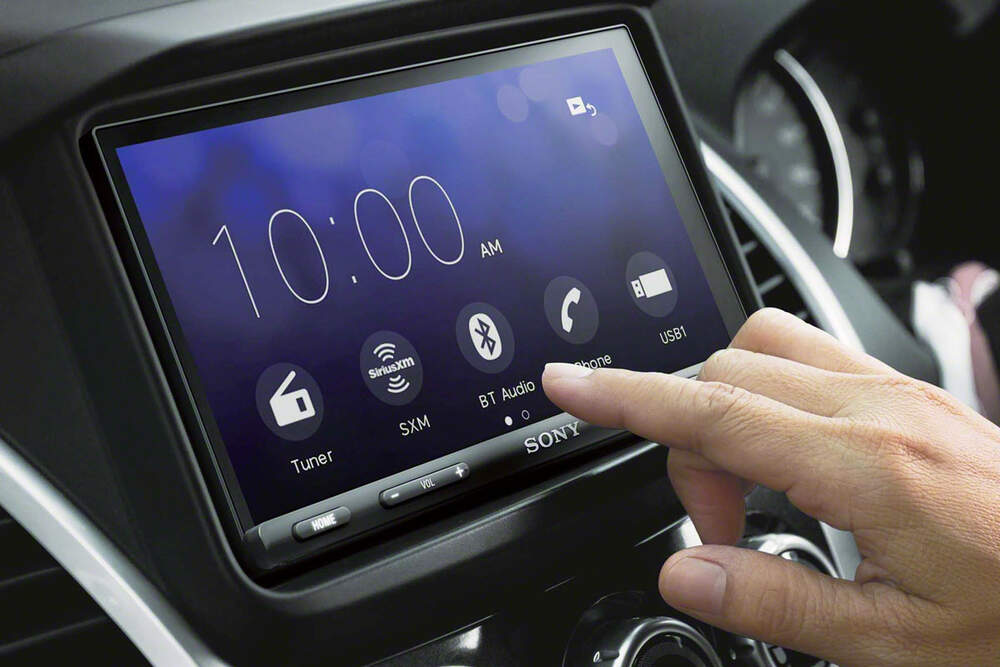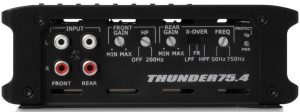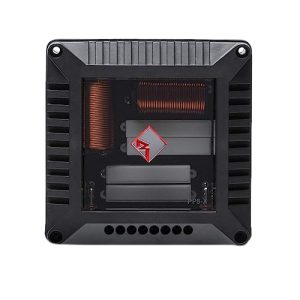A car touch screen enhances your driving experience, offering seamless access to navigation, music, climate controls, and smartphone integration. But what happens when your car touch screen stops working after cleaning? This frustrating issue plagues many drivers, disrupting access to essential infotainment features. Don’t worry—this guide dives deep into why your car touch screen becomes unresponsive after cleaning, provides practical solutions to fix it, and shares tips to prevent future problems. By the end, you’ll have a clear roadmap to restore your touch screen’s functionality and keep it in top shape.
Contents
Why Your Car Touch Screen Stops Working After Cleaning
Car touch screens, whether capacitive or resistive, rely on delicate sensors to detect touch inputs. Cleaning, while necessary to remove smudges and dirt, can interfere with these sensors if done incorrectly. Let’s explore the primary reasons your car touch screen might malfunction after cleaning, along with actionable fixes.
1. Residue from Harsh Cleaning Chemicals
Cleaning your car’s touch screen with the wrong products often leaves a residue that disrupts touch sensitivity. Many household cleaners, like Windex or glass wipes containing ammonia or alcohol, harm the screen’s protective coating. This coating, often oleophobic, repels oils and ensures smooth touch interactions. Harsh chemicals strip this layer, leaving a film that blocks the screen’s ability to register your touch.
Solution: Clean the screen with a microfiber cloth lightly dampened with water or a screen-safe cleaner designed for electronics. Spray the cleaner onto the cloth, not directly onto the screen, to avoid seepage. Gently wipe in circular motions, then buff with a dry microfiber cloth to remove streaks. This method removes residue without damaging the screen’s coating. For stubborn films, try a 50/50 mix of distilled water and white vinegar, applied sparingly.
2. Moisture Buildup Inside the Screen
Water or cleaning solutions can seep into cracks, gaps, or edges of the touch screen, especially if you spray liquid directly onto the surface. Moisture affects capacitive sensors, causing unresponsiveness or erratic behavior, like registering phantom touches. Older screens or those with minor damage are particularly vulnerable to liquid infiltration.
Solution: Power off the vehicle and let the screen air dry for several hours. Use a dry microfiber cloth to gently absorb any visible moisture. If the issue persists, place the car in a warm, dry environment to evaporate internal moisture. Avoid using a hairdryer, as heat can damage the screen’s components. If you suspect significant water damage, consult a professional technician to inspect the screen’s internal connections.
3. Calibration Issues After Cleaning
Cleaning can inadvertently misalign the touch screen’s calibration, especially if you press too hard or use aggressive wiping motions. Miscalibration causes the screen to misinterpret touch inputs, registering touches in the wrong areas or not at all. Software updates or improper cleaning techniques can also trigger this issue.
Solution: Access the touch screen’s settings menu to recalibrate it. Most car infotainment systems offer a calibration option under “Display” or “Touch Settings.” Follow the on-screen prompts to realign the sensors. Check your vehicle’s manual for specific instructions, as the process varies by make and model. If you can’t access the menu due to unresponsiveness, try a soft reset (detailed below) before recalibrating.
4. Software Glitches Triggered by Cleaning
Cleaning while the screen is powered on can cause accidental inputs, leading to software glitches. For example, rapid swipes or presses might confuse the system, causing it to freeze or become unresponsive. Outdated firmware or recent software updates can exacerbate these issues, making the screen less stable.
Solution: Perform a soft reset to refresh the infotainment system. For most vehicles, hold the power or volume button for 10–30 seconds until the system restarts. Some models require pressing a combination of buttons, like the home and fast-forward buttons, or a dedicated reset button near the console. Check your owner’s manual for the exact method. After resetting, update the system’s firmware via the manufacturer’s website or a dealership to ensure optimal performance.
5. Physical Damage from Aggressive Cleaning
Car touch screens are fragile, and excessive pressure or abrasive materials like paper towels can cause micro-scratches or cracks. These damages impair the screen’s sensors, leading to partial or complete unresponsiveness. Rough cleaning motions can also dislodge internal connections, especially in older vehicles.
Solution: Inspect the screen for visible scratches or cracks. If damage is minor, clean gently with a microfiber cloth and test responsiveness. For significant damage, contact your vehicle’s manufacturer or a certified technician for repair or replacement. Avoid DIY repairs, as mishandling can worsen the issue. To prevent future damage, always use soft, non-abrasive materials and light pressure when cleaning.
6. Electrical Interference from Cleaning Agents
Certain cleaning agents, particularly those with alcohol or ammonia, can interfere with the screen’s electrical signals. Capacitive touch screens rely on your finger’s electrical charge to register touches. A conductive residue from improper cleaners can disrupt this process, mimicking constant touch inputs or blocking them entirely.
Solution: Wipe the screen with a microfiber cloth dampened with distilled water to neutralize conductive residues. Dry thoroughly with a clean microfiber cloth. If the issue persists, try a soft reset to clear any electrical interference logged by the system. Avoid using alcohol-based cleaners in the future to prevent recurrence.
7. Overheating or Environmental Factors
Cleaning a hot touch screen, especially after driving in direct sunlight, can cause issues. Heat causes cleaning solutions to evaporate quickly, leaving streaks or residues. High temperatures also affect the screen’s sensors, making them less responsive. In humid climates, moisture from cleaning can linger, worsening the problem.
Solution: Wait 10–15 minutes for the screen to cool before cleaning. Clean in a shaded or indoor area to avoid rapid evaporation. Use a dry microfiber cloth to remove dust, followed by a slightly damp cloth with a safe cleaner. Ensure the screen is completely dry before powering on. Park in shaded areas or use a sunshade to reduce heat buildup in the future.
How to Safely Clean Your Car Touch Screen
Preventing touch screen issues starts with proper cleaning techniques. Follow these steps to maintain your infotainment system’s clarity and responsiveness without risking damage:
- Turn Off the Screen: Power down the display to avoid accidental inputs and make smudges more visible. A dark screen also helps you spot dirt and dust.
- Use a Microfiber Cloth: Choose a high-quality, plush microfiber cloth to gently remove dust and fingerprints. Avoid paper towels, facial tissues, or rough rags, as they can scratch the surface.
- Apply a Safe Cleaner: Lightly mist a microfiber cloth with a touchscreen-safe cleaner or a mix of water and mild soap. Never spray liquid directly onto the screen to prevent seepage.
- Wipe Gently: Clean in circular motions with light pressure, starting from the top and moving downward. Focus on corners and edges where dirt accumulates.
- Dry Thoroughly: Buff the screen with a dry microfiber cloth to remove moisture and streaks. Ensure the screen is completely dry before turning it on.
- Add a Protective Layer: Consider applying a hydrophobic screen treatment to repel fingerprints and dust. Avoid screen protectors, as they can reduce touch sensitivity or create glare.
Clean the screen weekly for light maintenance and perform a deep clean every two weeks to remove oils and grime. Keep a microfiber cloth in your glove box for quick touch-ups.
Preventive Tips to Avoid Touch Screen Issues
To keep your car touch screen responsive and damage-free, adopt these habits:
- Avoid Harsh Chemicals: Stick to water, mild soap, or dedicated screen cleaners. Steer clear of ammonia, alcohol, or abrasive solutions.
- Clean with Care: Use soft, lint-free microfiber cloths and avoid pressing too hard. Treat the screen like a smartphone display.
- Check for Updates: Regularly update your infotainment system’s firmware to prevent software-related issues. Visit your manufacturer’s website or dealership for the latest updates.
- Protect from Elements: Park in shaded areas to reduce heat and sun exposure. Use a sunshade to keep the dashboard cool.
- Inspect Regularly: Check the screen for cracks or damage before cleaning. Address minor issues early to avoid costly repairs.
When to Seek Professional Help
If cleaning, resetting, or recalibrating doesn’t restore your touch screen’s functionality, the issue might require professional attention. Contact your vehicle’s manufacturer or a certified technician if you notice:
- Persistent unresponsiveness despite multiple resets.
- Visible cracks, scratches, or internal moisture.
- Erratic behavior, like random inputs or freezing.
- Electrical issues, such as flickering or blank displays.
Check your car’s warranty to see if touch screen repairs are covered. Dealerships often provide diagnostic tests and software updates that DIY methods can’t address. For aftermarket head units, consult the manufacturer or an auto electronics specialist.
Real-World Success Stories
Many drivers have faced touch screen issues after cleaning and found success with simple fixes. One Reddit user on the Kia Forte subreddit shared that their 2023 model’s screen became unresponsive after using ArmorAll glass wipes. By cleaning with a microfiber cloth and water, they removed the film and restored functionality. Another user on a Subaru forum fixed their touch screen by holding the power button for 12–15 seconds to reset the system, avoiding a costly dealership visit. These stories highlight the effectiveness of gentle cleaning and soft resets for common issues.
Conclusion
A car touch screen not working after cleaning can feel like a major setback, but most issues stem from residue, moisture, calibration errors, or software glitches. By using the right cleaning methods—microfiber cloths, safe cleaners, and gentle techniques—you can restore your screen’s responsiveness and prevent future problems. Start with simple fixes like cleaning with water, performing a soft reset, or recalibrating the screen. If these don’t work, seek professional help to avoid further damage. Regular maintenance, such as weekly light cleaning and firmware updates, keeps your infotainment system in top condition.
With these tips, you’ll enjoy a crystal-clear, responsive touch screen that enhances every drive. Have you faced this issue before? Share your experience or questions in the comments below, and let’s keep the conversation going!






